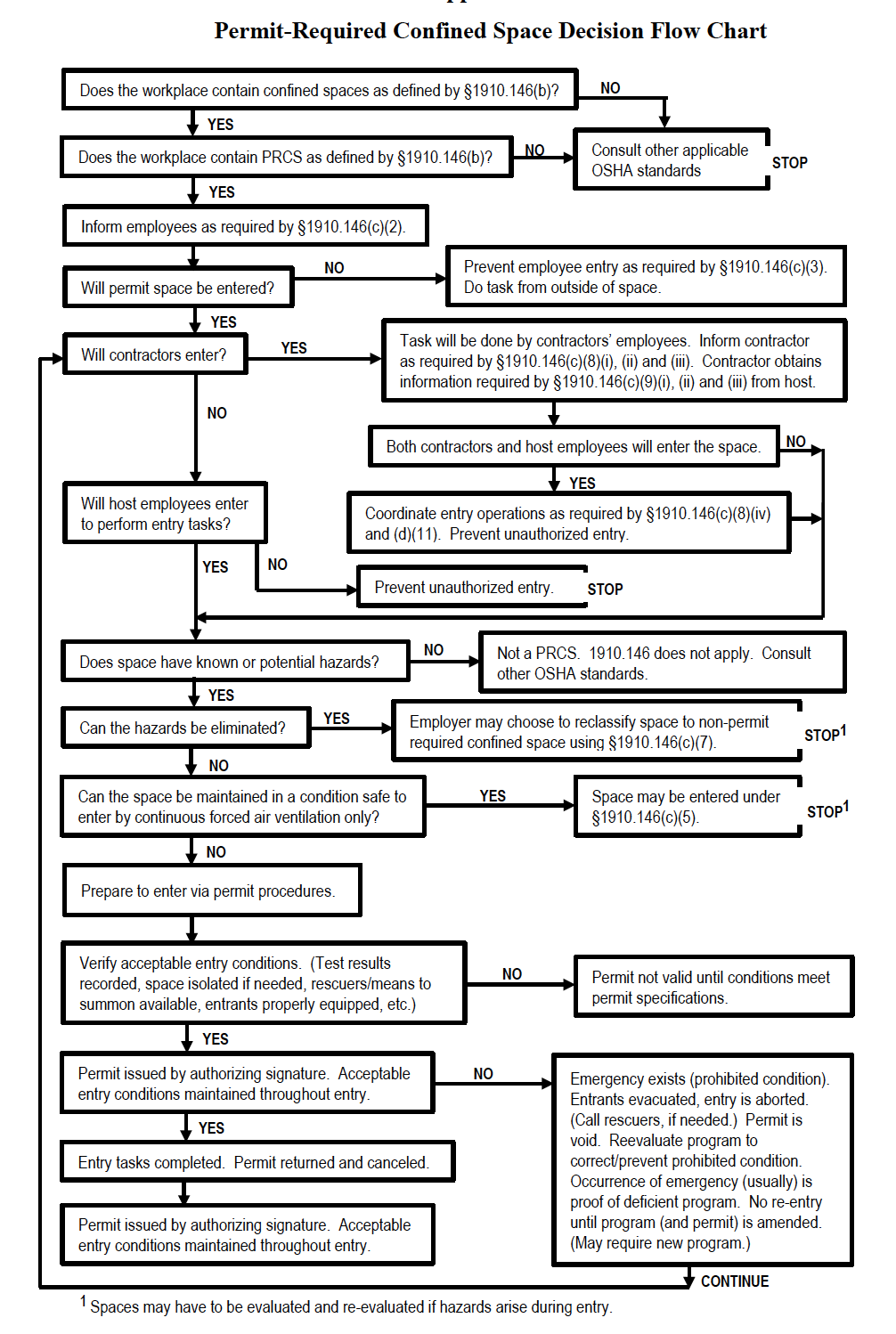The Final Rule for Permit-Required Confined Spaces was published in the Federal Register on January 14, 1993, and became effective on April 15, 1993. The standard is based on years of gathering information on confined space fatalities and on testimony about the hazards of confined spaces from all sectors of industry and labor. Because it applies to all of the general industry, a performance-oriented standard was developed rather than a specification standard. The rule citation is 29 CFR 1910.146.
Many workplaces contain spaces that are considered “confined” because their configurations hinder the activities of any employees who must enter, work in, and exit them. For example, employees who work in process vessels generally must squeeze in and out through narrow openings and perform their tasks while cramped or contorted. For this rulemaking, OSHA uses the term “confined space” to describe such spaces.
In addition, there are many instances where employees who work in confined spaces face an increased risk of exposure to serious hazards. In some cases, confinement itself poses entrapment hazards. In other cases, confined space work keeps employees closer to hazards, such as asphyxiating atmospheres or the moving parts of a mixer, than they would be otherwise.
OSHA uses the term “permit-required confined space” (permit space) to describe those spaces which meet BOTH the definition of “confined space” AND pose health or safety hazards.

